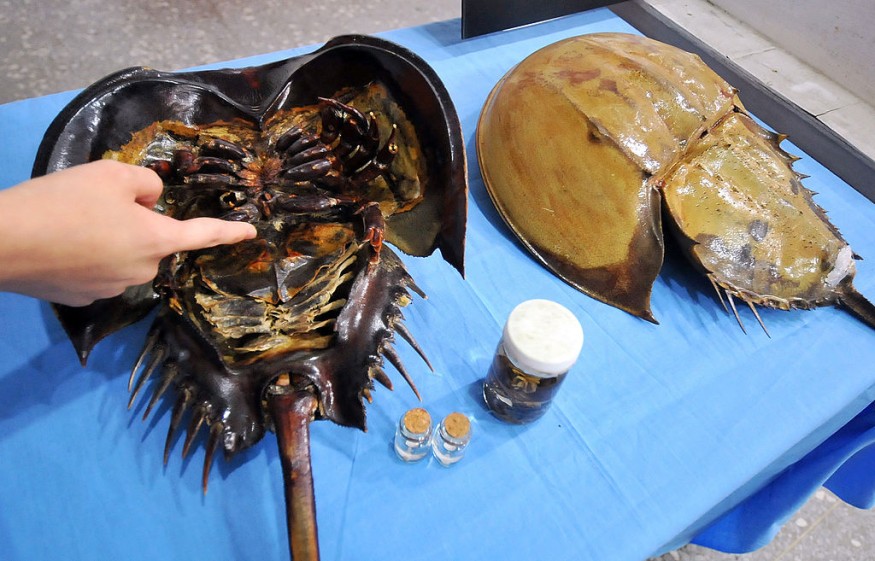Horseshoe crabs, a 450-million-year-old living fossil, are on the verge of extinction, according to conservationists, due to the pharmaceutical industry's need for their blood.
The industry of breeding horseshoe crabs, on the other hand, is growing, according to The Verge. The blue blood of horseshoe crabs is so precious that a gallon is worth $60,000.

Why Horseshoe Crab's Blue Blood Is Worth $60,000 per Gallon
The horseshoe crab's blue blood is one of the most important, unknown, and widely used materials in the ocean. Crabs are eaten in certain parts of Asia, but most people harvest them for their precious blue blood. According to Fine Dining Lovers, the price can bring up to $60,000 per gallon in some places. That implies a quart of horseshoe crab blood may be worth $15,000 on the open market, Big Think added.
Why is blood so expensive for such a small amount? The horseshoe crab is used in the pharmaceutical industry to identify microbes on innovative devices such as pacemakers and immunizations.
The crab's blood includes amebocytes, which protect the crabs from disease-causing germs; it is also vulnerable to bacterial toxins, which is why it is used to make Limulus Amoebocyte Lysate (LAL), a chemical used in the medical industry to identify contamination.
The amoebocytes are harvested from the crab, which has been alive for over 450 million years and is sometimes referred to as a living fossil. Hundreds of thousands of people are milked of their copper-laden blood every year because the medical establishment has become so reliant on LAL.
They are collected from beaches in the United States, many of which near the Atlantic Ocean's shore, and then returned to beaches far from where they were collected to minimize unintended recollection. Unfortunately, between 10% and 30% of the organisms die during and after the bleeding process, and females who survive are significantly less likely to mate.
As a result of this, as well as agricultural and environmental factors that threaten the crab's survival rates, many experts fear that this little species, which has survived dinosaurs, disasters, and ice ages, will be extinct one day.
Factor C, a lab-grown testing kit, operates similarly to LAL. However, it was only used to test drugs for final approval in 2016 due to the conservative pharmaceutical sector and sluggish regulatory improvements.
LAL, not rabbits, eventually replaced them in medical testing, and it would be a travesty to see the crabs go extinct when a lab-grown replacement is available.
Lab-Grown Substitutes
The concept of lab-grown meat, also known as cultured, cultivated, cell-based, or clean meat, has emerged in the previous two decades. The Humane League said startups in Silicon Valley are hurrying to get lab-grown meat on the market, even if it isn't quite ready for consumers.
And the stakes are sky-high. Millions of animals might be rescued from suffering and terrible ends on industrial farms thanks to lab-grown meat.
For human sustenance, 70 billion terrestrial animals and maybe billions of marine species are slain each year. The majority of these animals are raised on factory farms, where they are exposed to brutal treatment and held in filthy conditions throughout their lives.
Factory farming is regularly defended by major meat producers as the most efficient way to meet global meat demand. However, research shows that these facilities are harmful to the environment, the communities in which they are located, consumer health, and animal welfare.
RELATED ARTICLE : Glowing Neurons: Genetically Modified Jellyfish Gives Light on How Human Minds Work
Check out more news and information on Animals and Medicine and Health in Science Times.
© 2026 ScienceTimes.com All rights reserved. Do not reproduce without permission. The window to the world of Science Times.












